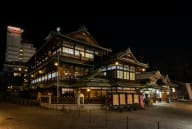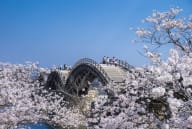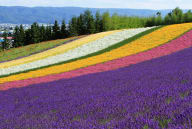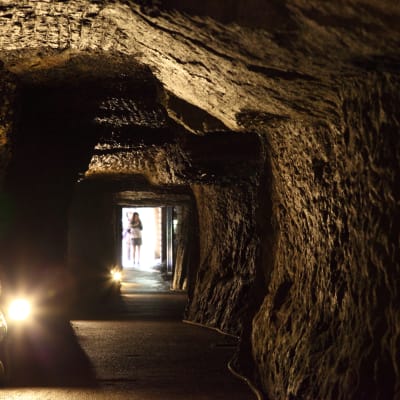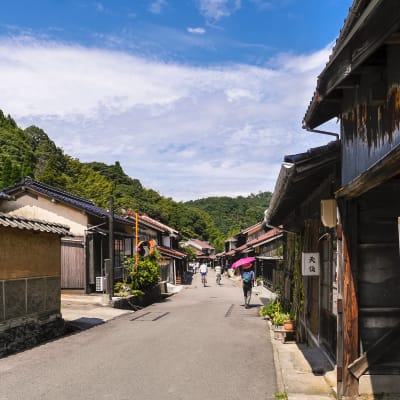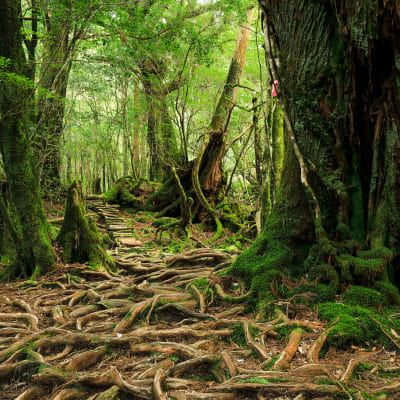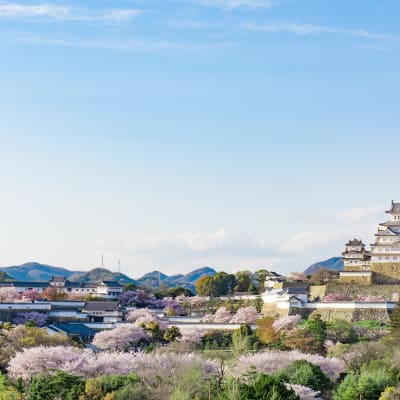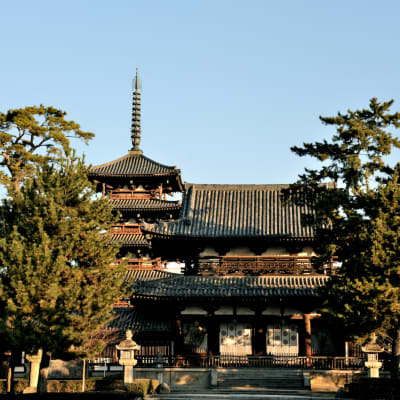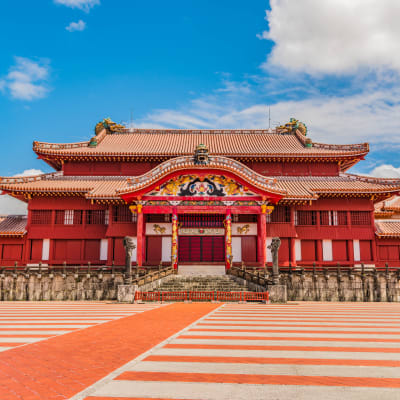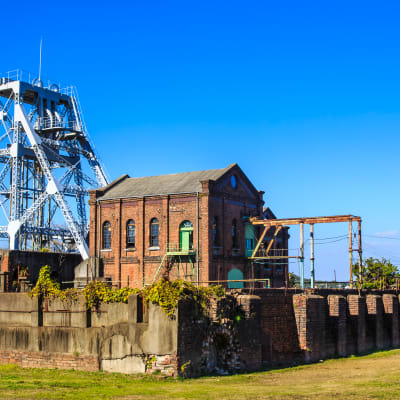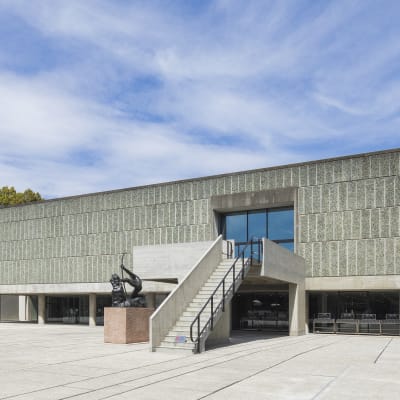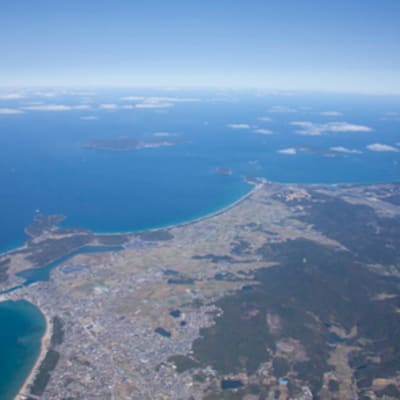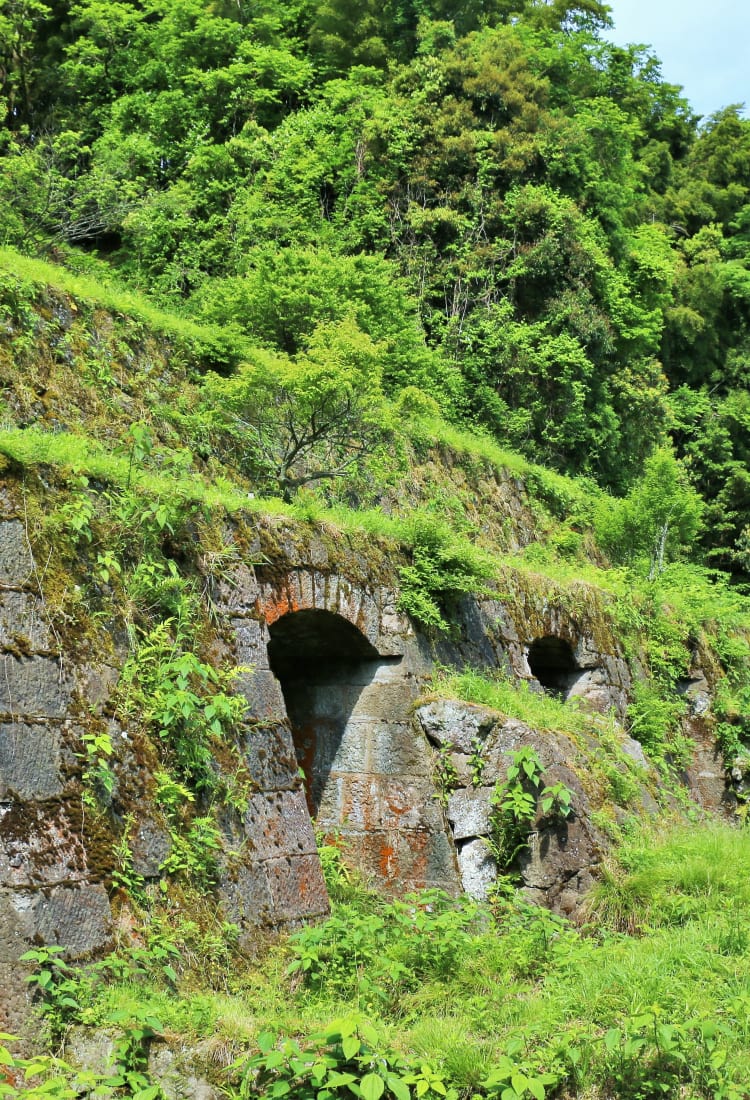

Mine d’argent d'Iwami Ginzan et son paysage culturel (UNESCO) Un voyage à la découverte de 400 ans d'histoire de l'industrie
En usage entre 1527 et 1923, Iwami Ginzan était l'une des mines d'argent les plus importantes du monde. Au XVIe siècle, elle comptait pour un tiers de la production mondiale.
Occupant une large zone au centre de la préfecture de Shimane dans la région de Chugoku , les paysages de la mine et ses environs ont traversé les siècles sans être affectés par le temps. La mine est nichée dans une forêt dense, sur une parcelle de montagne que les populations locales se sont efforcées de préserver.
Points forts
- Explorer la mine de Ryugenji Mabu, qui était exploitée dès 1715
- Visiter le village voisin d'Omori-cho, où résidaient les mineurs locaux
- Parcourir le sentier de 12 km qui relie la mine à la ville portuaire d'Okidomari

Randonnée ou simple balade, à vous de choisir
L'un des facteurs décisifs dans la classification des mines d'argent d'Iwami Ginzan au patrimoine mondial de l'UNESCO est leur ancrage dans un vaste environnement naturel, avec lequel elles cohabitent depuis plusieurs siècles. Les mines d'Iwami Ginzan couvrent une vaste étendue et sont reliés par de nombreux chemins de randonnée. Selon le sentier que vous emprunterez, vous découvrirez des paysages rocailleux de montagne ou des chemins qui sinuent à travers la campagne.
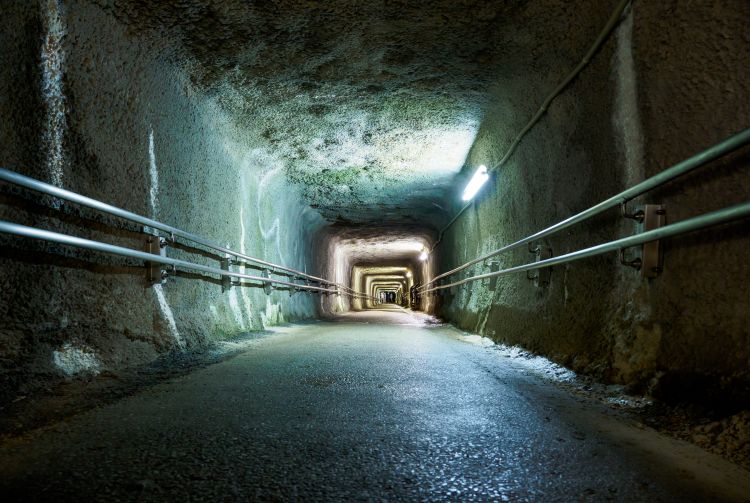
Explorer un puits de mine
Les mines comptent environ 1000 puits, appelés « mabu ». Parmi ces derniers figure celui de Ryugenji Mabu, en exploitation dès 1715. Il est ouvert au public et accueille des démonstrations mettant en scène les diverses méthodes d'extraction utilisées à travers les siècles. Entrez dans l'étroite galerie, située au cœur de la forêt, pour découvrir les procédés manuels utilisés aux premières heures de l'exploitation minière. Vous ressortirez de l'autre côté.
Découvrez les anciennes techniques d'extraction minière
Les mineurs d'Iwami Ginzan utilisaient une méthode de raffinage appelée le « haifuki-ho » (méthode de coupellation) et qui fut introduite depuis la Corée en 1533. Les minerais d'argent et de plomb étaient fusionnés pour constituer un alliage, qui était ensuite versé dans un fourneau et chauffé à une température incroyablement élevée pour en extraire l'argent. La méthode a très largement participé à augmenter les volumes de la production d'argent japonaise.

Promenez-vous dans l'ancienne ville minière
À deux kilomètres du puits de Ryugenji Mabu se trouve la ville d'Omori . Ce village, qui s'est développé au rythme de la mine, compte un bureau de magistrat, d'anciennes résidences de samouraïs, des sanctuaires, ainsi que des échoppes. Aujourd'hui, la plupart de ces structures ont été transformées en cafés et magasins de souvenirs. La résidence de la famille Kumagai fait partie des attractions à ne pas manquer. Plus ancienne habitation du village, cette structure vous donnera un aperçu de la vie des négociants d'argent à l'époque.
Aventurez-vous dans les grottes d'un temple perché dans la montagne
Un sentier aux vues imprenables relie la mine au port d'Okidomari, à 12 km de là. En chemin, vous découvrirez le temple Rakanji, qui abrite trois grottes qui recèlent 500 statues du Bouddha jizo, affichant chacune des visages différents.


Détendez-vous dans les villes portuaires environnantes
Lorsque vous visitez la région, n'oubliez pas de prévoir un moment de repos dans votre programme pour profiter des célèbres sources chaudes de Yunotsu , près d'Okidomari. Les eaux régénérantes de ces deux bains publics sont célèbres dans tout le Japon.
Comment s'y rendre
Les centres de transports régionaux les plus proches sont la gare d'Odashi et l'aéroport d'Izumo.En avion, Izumo est à environ une heure et quinze minutes de Tokyo.
Deux routes principales mènent aux mines, l'une depuis la préfecture de Shimane , et l'autre depuis la préfecture de Hiroshima . Les services de bus étant néanmoins très limités, si vous voyagez depuis Shimane , prévoyez d'y séjourner une nuit pour visiter Izumo Taisha, le sanctuaire le plus ancien et le plus important du Japon, et les autres sites de Shimane .
Si vous voyagez depuis la région du Kansai , il est peut-être plus pratique d'emprunter le train à grande vitesse à destination de Hiroshima , mais souvenez-vous que cette région est souvent victime d'importantes chutes de neige durant l'hiver.
Pour vous loger, seuls quelques petits ryokan (auberges japonaises) sont disponibles dans la ville d'Omori . Il est donc conseillé de séjourner dans la ville de Yunotsu ou dans les quartiers urbains d'Oda. Veuillez noter que les ryokan disponibles à Yunotsu et Oda ne disposent que d'un nombre limité de chambres. Une autre option est de sillonner la région en séjournant près de l'aéroport d'Izumo.
















